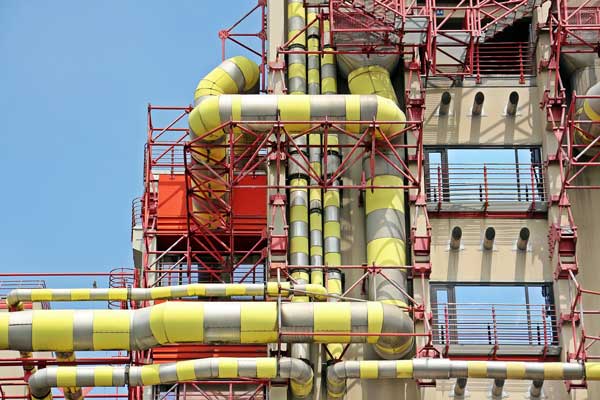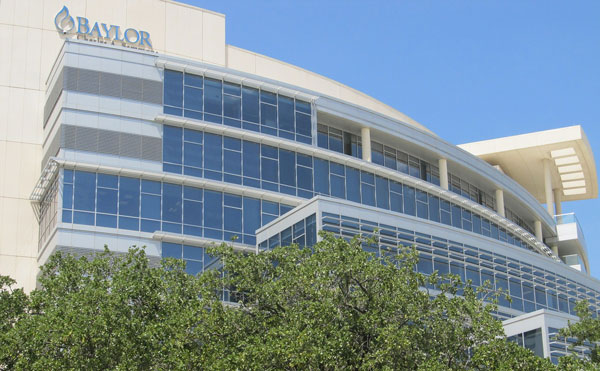
FMs have long job descriptions. Oracle (and possibly magician) should be right at the top.
After all, the budgets that facilities managers produce for approval each year must correctly anticipate future equipment replacement and at the same time account for the potential for catastrophic events such as floods or epidemics. Regular maintenance, retrofittings and daily operations must continue at acceptable levels, even while staff is reduced and savings actively sought.
So, we turned to the experts for tips FMs can use. Here are six steps that can help make a facilities management budget more reliable and more likely to be approved.
Align Long-Term Goals With Business Objectives
In Healthcare Facilities Today, Jeff O'Connor writes that the most successful approach to managing facilities is when FMs take a strategic approach rather than a tactical one. Instead of reacting to events as they occur, O’Connor says taking the long view, based on business objectives set out over the next five to 30 years, aligns success in both the management of the facilities and the business for which they exist.
This means an FM needs to have two planning modes: Short-term and long-term. The first allows for operational budget planning; the second allows for planning for future expenditures.
“That [long-term] view into when system renewals are due and when potential spikes in spending will occur,” O’Connor writes, “enables intelligent decisions today, such as deciding to spread project costs out over several years to avoid individual years with enormous spending needs.”
And when a facilities manager aligns her plans with the organization’s goals, funding requests are more likely to be approved. “For example,” O’Connor explains, “if the FM team proposes to replace an HVAC system in an office building, as opposed to putting funds into a roofing project to address leaks in the main hospital building, their priorities will be questioned, especially if the hospital’s overarching objective that year is to improve patient outcomes.”

Spell Out the Negative Impact of Not Taking Action
When submitting a proposal for funding to the budgetary committee, explain what could happen if they try to kick the can down the road one year, as the Canadian city of Waterloo did when it proposed the addition of a Facilities Maintenance Planning Supervisor position.
After setting out the reasons why the new position is warranted, the implications of the proposal not being approved are highlighted in the bottom line: “it will be increasingly difficult to ensure that safety and other regulatory requirements are met within buildings.”
There’s another reason why explaining the impact of refusals is important, and it works with budget cuts, too.
In a 2014 IFMA panel in Toronto, REMI reports, Sodexo Canada’s Mike Varvel used the example of an FM who delivered a requested 5 percent budget cut — but never bothered to explain the ramifications of the savings. Varvel says that facilities manager has just “set himself up to be asked to make future such reductions” because the budget committee never connected the dots to what downsides these cuts might have had.
Whether those savings are found by way of deferring preventive maintenance work or switching to a less expensive vendor, there is a trade-off, and it should be made clear to the budget committee.
Details Matter
Equipment can be expensive to repair. That’s why the team at HEPACART, a manufacturer of dust containment solutions for hospital construction and renovation projects, says that maintaining a warranty database is important. Items that are covered for maintenance or repairs save the facilities management department money, and should be used.
“Before any repair or maintenance is ordered,” they write, “make it a habit to check the warranty database and verify whether or not that equipment is covered.”
Low Budgets, High Standards
Decreasing budgets is a fact of every FM’s life, and it’s not likely something that will change.
A segment of the budget that is increasingly under scrutiny is cleaning and maintenance. In fact, a full 90 percent of respondents in a Cleaning and Maintenance survey said, “reducing overall cleaning and maintenance costs was important to their facility or organization in some capacity.”
Anthony F. Maione, vice president of Core Management Services, told CM that the cost-cutting focus is ongoing. “There is a tremendous amount of pressure when budgeting, which puts in-house facility managers in a financial squeeze. They are constantly tasked with figuring out how to continue to produce successful outcomes for stagnant or decreasing budgets.”
Examining a building’s cost history is helpful in this regard in order to predict future costs. Similarly, reevaluation should be conducted at set intervals. This can include cleaning and maintenance procedures as well as the number of employees needed overall. Separately, the hours required for employees to complete tasks properly can be reexamined, with budget modifications made.

Stay on Top of Upcoming Changes
The gradual EPA phase-out of R-22, the common commercial refrigerant used in HVAC and refrigeration equipment, will be completed by 2020. Building owners and facilities managers have three options for alternatives, according to a report issued by EMCOR Facilities Services.
These include:
1. Rull replacement of equipment, best for old systems
2. Retrofit, best for equipment that still has useful life remaining
3. Wait, best for equipment still in good working order
The facilities manager who is aware of changes like this will modify upcoming budgets. In the shorter term, as R-22 costs rise, repairs to dated HVAC or refrigeration equipment will cost more. In the longer term, the purchase of new, more efficient equipment (or retrofitting with an approved R-22 alternative) should be planned for.
Use BIM to Plan Ahead
While Building Information Modeling is not a new concept, it’s only recently that the use of BIM is being widely accepted and used. Brian Haines at FM Systems points to a 2014 McGraw-Hill Smart Marketing report that said, “84 percent of building owners in the US and 95 percent of building owners would be adopting the use of BIM for all new construction within 2 years.”
The benefit of BIM to facilities managers specifically is in the real-time information the model is able to provide. Jeff Link at Redshift cites Ohio State University’s FM department, which used BIM to adjust costs even before renovation projects began.
And possibly more impressive from the point of view of a facilities manager struggling with budget cuts, Xavier University’s administration “raised the maintenance budget from $750,000 per year to $12 million,” Link writes. “Why? BIM data served as empirical proof of the need for new room finishes, flooring, roofing, and mechanical equipment that had previously been left unaccounted.”
Engineering consultant and BIM director of digital design Ged Smith tells Modern Building Services that 3D models are beneficial after construction because of its value in both project and product lifecycle management. “Detailed tagging of assets — which encompasses everything from make and diameter of pipes to the maintenance needs of ventilation systems — is directly interfaced with a site’s facilities management programme,” Smith writes. “This creates a ‘digital twin’ of a facility — enabling real-time analysis and insights, as well as the ability to model potential scenarios.”
It’s not just avoiding costly errors, including further damage, delays and overruns, that makes the BIM method so useful to facilities managers. It’s also that energy usage is more accurately controlled, which translates into more efficiency and less wastage.
Credits:
Unsplashpixel2013
skeeze

